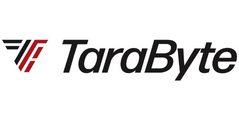A big part of inventory management is the ability to make inventory adjustments.
Ever wonder how Fishbowl handles different types of inventory adjustments? There are five different types of inventory adjustments that are done within Fishbowl. Here’s what you need to know about each:
- Cycle Counts – These are the routine “Oops, Fishbowl says I have five and I really only have four on the shelf, so I’m going to fix Fishbowl” sort of entries. These transactions drive a journal entry to inventory and the inventory adjustment account.
- Add Inventory – I use this adjustment type when my on-hand inventory is zero, in order to protect my costing layers. The advantage of the Add Inventory adjustment type is that you can assign a cost to the parts you are adding. This transaction type drives a journal entry to inventory and the inventory adjustment account.
- Cost Adjustment – If for some reason (usually “fat fingers”) the cost of a part is incorrect and you change that cost in Fishbowl, Fishbowl will multiply the cost change by the quantity in inventory at that time, and then send a journal entry for the difference to inventory and the inventory adjustment account.
- Scrap Transactions – I like to differentiate these transactions from Cycle Count Transactions. I like to define scrap not as an “oops, I have fewer parts on hand than I thought I did,” but as an Ugh, I have parts that need to go in the trash. This adjustment sends a journal entry to inventory and the mapped scrap account.
- Initial Inventory Count – This is only used for adding initial inventory, i.e. upon the initial import of inventory quantities directly from QuickBooks to Fishbowl. This is done from the Fishbowl accounting module, and it does not make any financial entries in QuickBooks (since, after all, the inventory has already been accounted for in QuickBooks).
Adding inventory to the system
Fishbowl supports four costing methods (Average Costing, First In First Out, Last In First Out, and Standard Costing). It keeps track of all the costing layers (Buy at $10, Buy at $8, etc.) and uses this data to calculate Cost of Goods Sold for all of these costing methods except Standard Costing. It is therefore very important to avoid introducing artificial layers with zero cost. I’ve seen this happen when clients have decided to use zero dollar Purchase Orders instead of inventory adjustments to add inventory to the system. Always use inventory adjustments to add inventory to the system.

.png)
